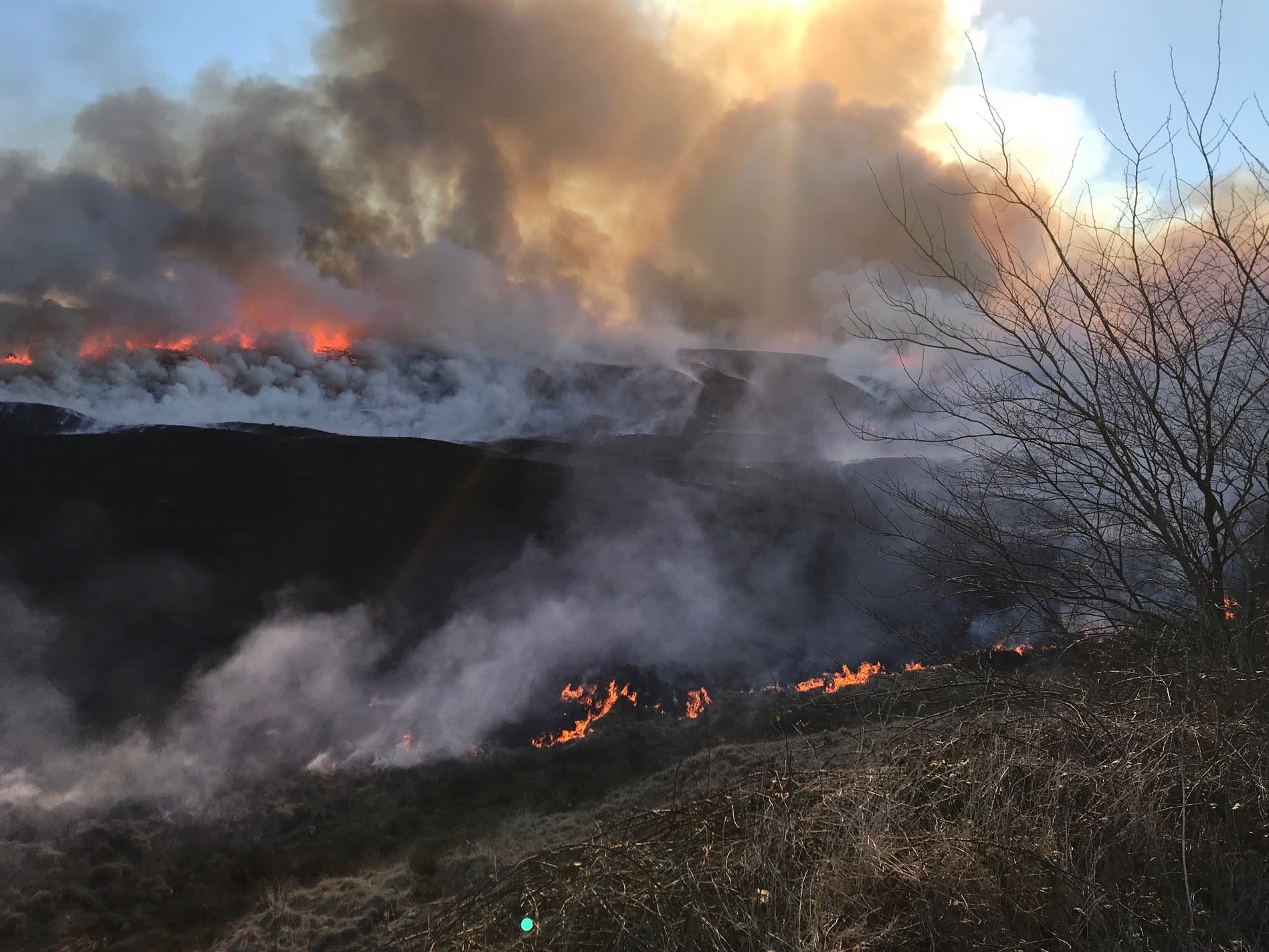UK wildfires increase to the highest number on record
A total of 4,229 wildfires were recorded in the UK in 2018/19, an increase of 2,708 since 2014/15
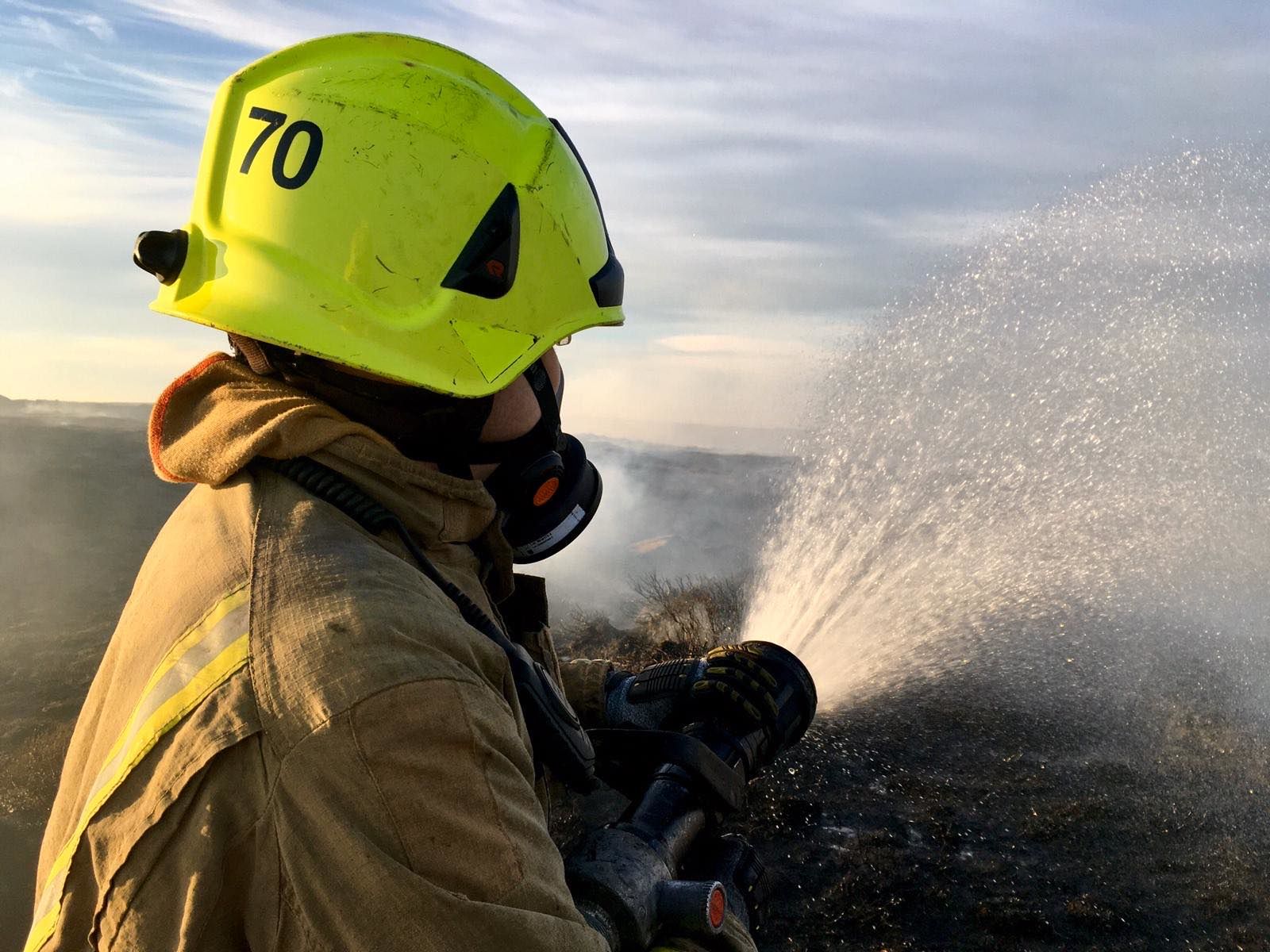
Photo by Woodland Trust (@WoodlandTrust)
The UK has seen a recent spike in wildfires after a sudden surge in 2018 and 2019.
We submitted 25 freedom of information requests to fire and rescue services across the UK to investigate the increase of wildfires.
Tom Smith, Assistant Professor in Environmental Geography at the London School of Economics said:
“Climate change is responsible for increasing the likelihood of a fire igniting and spreading.
“The longer dry spells and warm periods that we are already experiencing in the UK are certainly contributing to more frequent and intense wildfires in the UK.”
Studies show that 80 to 90 per cent of wildfires are caused by humans but experts claim climate change has had an impact on the spike.
Professor Smith, who is an expert in wildfires, concludes that predicted warmer summers and wetter winters means longer growing seasons, so there is plenty more vegetation or ‘fuel’ for a wildfire.
Heatwaves can dry out vegetation which can make it more likely to ignite.
Professor Smith added to his research that warmer summers also mean more people go outdoors which could lead to accidental fires.
The statistics reveal that the biggest increase of wildfires occurred in West Yorkshire with 494 wildfires in 2018/19, up from 89 in 2016/17.
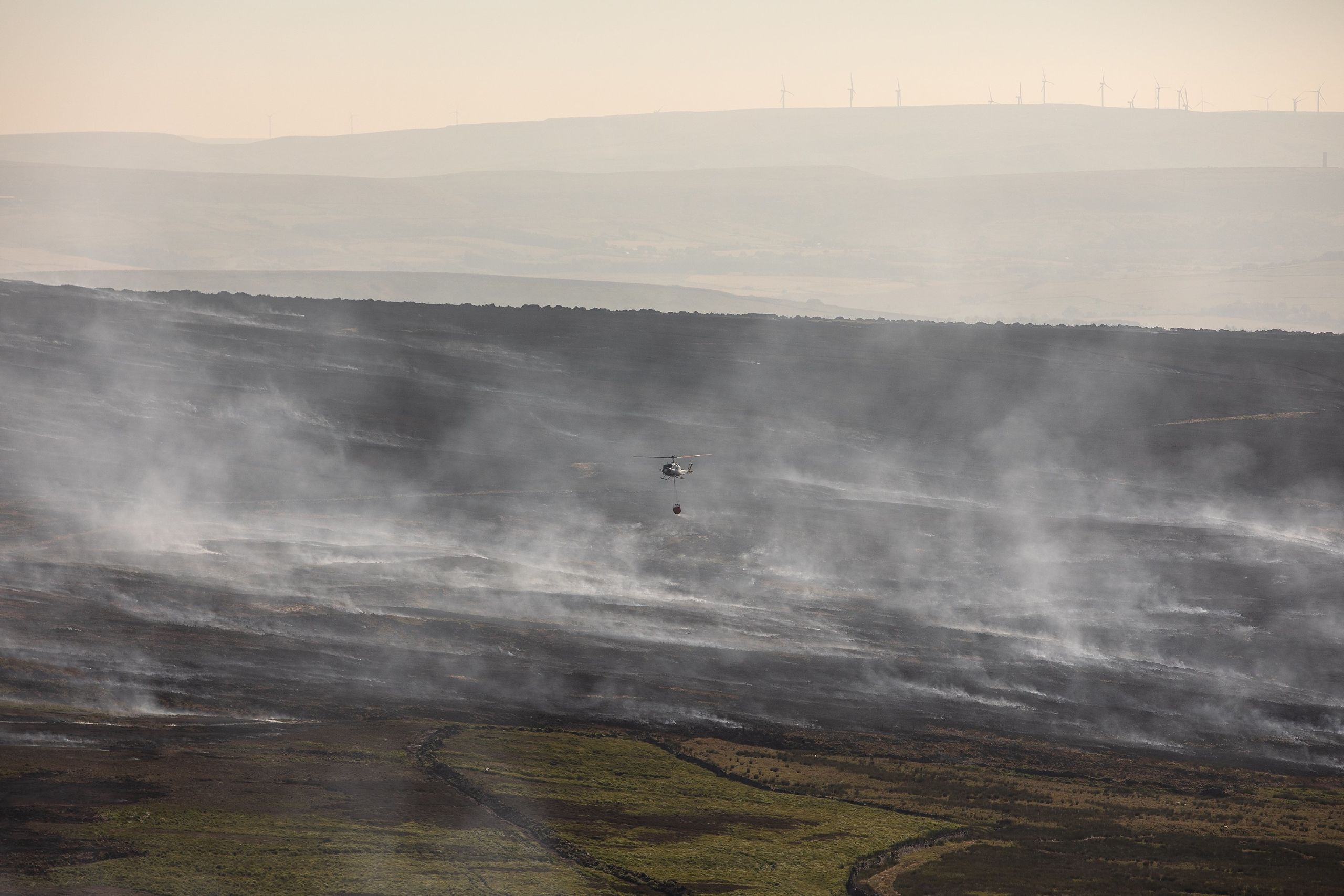
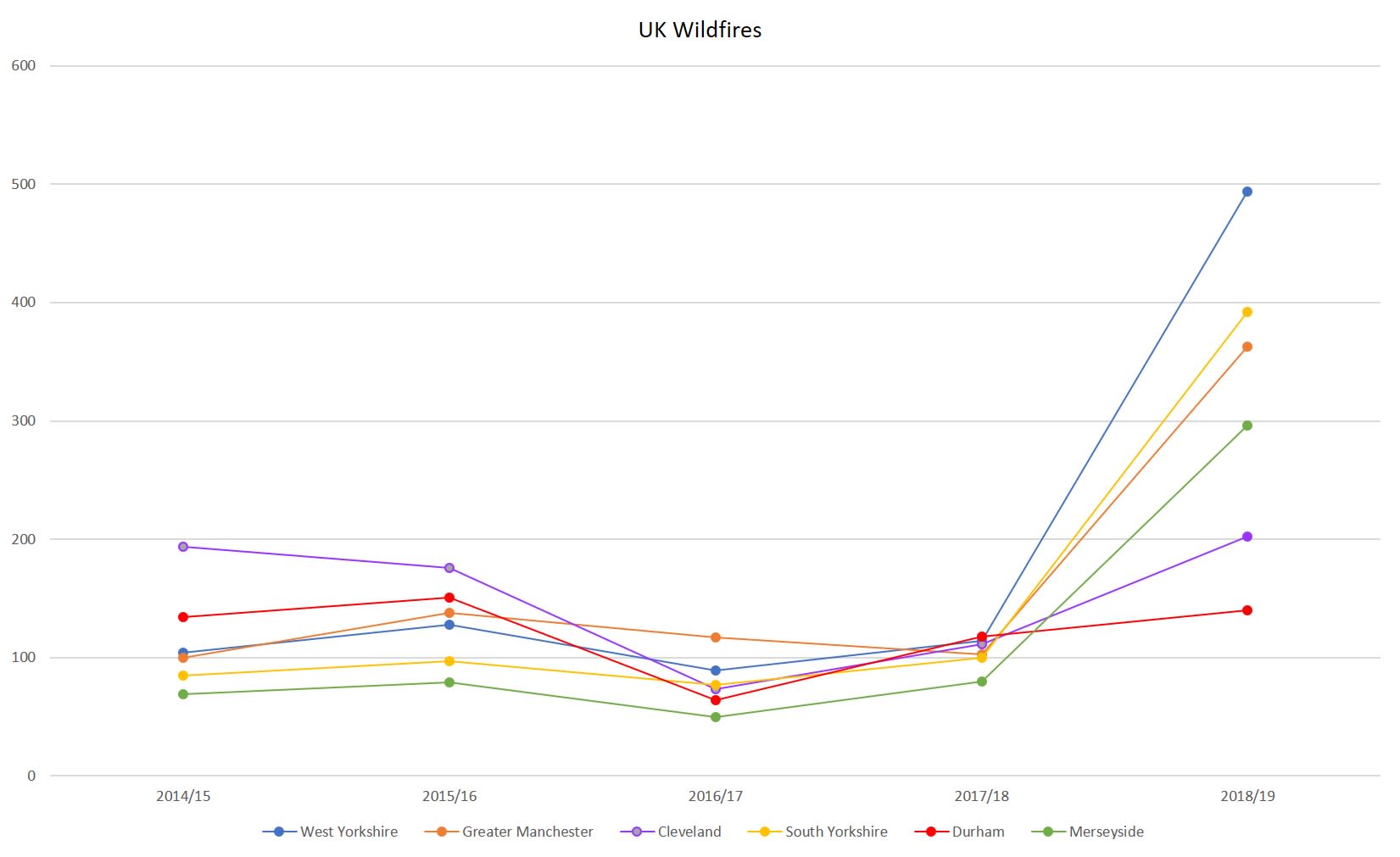
The biggest increase in wildfires hit the UK in 2018 and 2019, but experts say we can only understand the true increase of wildfires by asking long standing members of the fire service.
Ex Hereford and Worcester fireman, Lee Champ said: “Most people think that wildfires happen in the summer, but most of the fires that brigades deal with in forests, heathland and moorland happen in the Spring.
“In 2018 and 2019 those fires were happening a lot earlier in February. That’s been the significant change which I think was a combination of a drier winter, a few hot days and some strong winds.
“Every year I was in the operational fire service we would be called out to a fire in the Malvern Hills. From 1993 all the way through to the early 2000s there wasn’t much of an increase [of wildfires] but back then we didn’t collate those kinds of statistics. After that, there was a drop in wildfires between 2011 and 2016 when fire services across the UK had a huge amount of cuts. The fire services spoke to local authorities to discuss how we could control fires more, we looked at prevention.
“We carried out controlled fires and vegetation was cleared from areas. It worked really well, but in the latter part of my career, from 2016 onward, the fires started to increase again. Undoubtedly drier and warmer weather was a huge factor. We also had further local budget cuts so dead vegetation and grass verges weren’t getting cut as frequently. I think the increase of recent wildfires is a combination of weather patterns, budget cuts and climate change.”
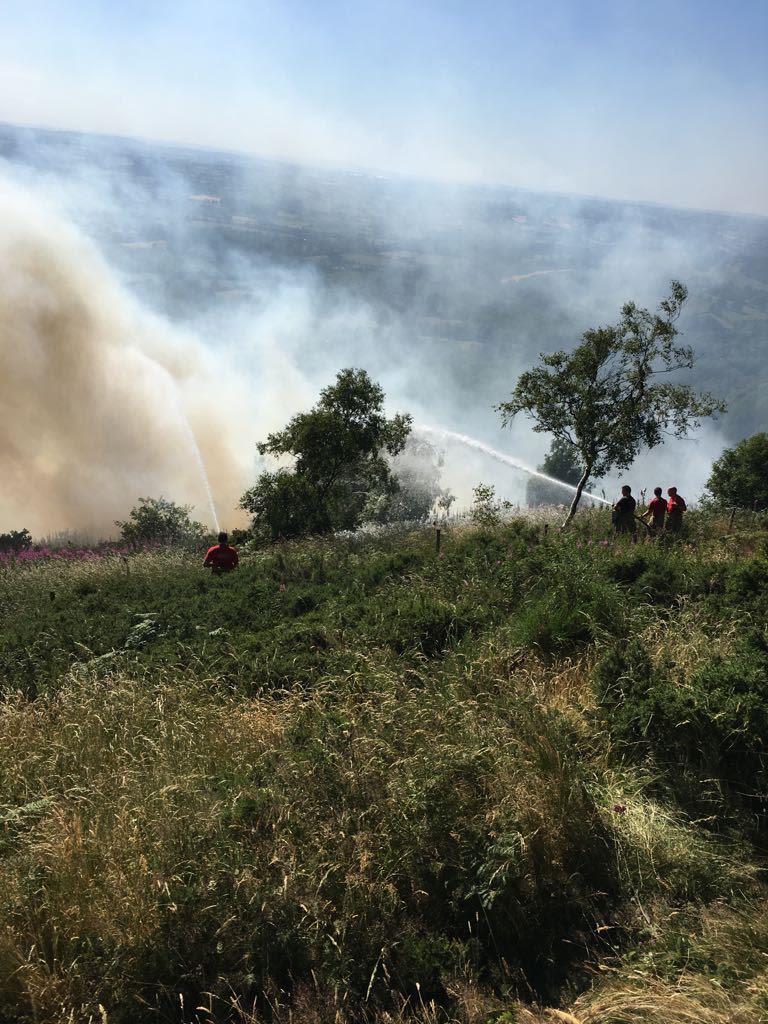
Fire service library
Fire service library
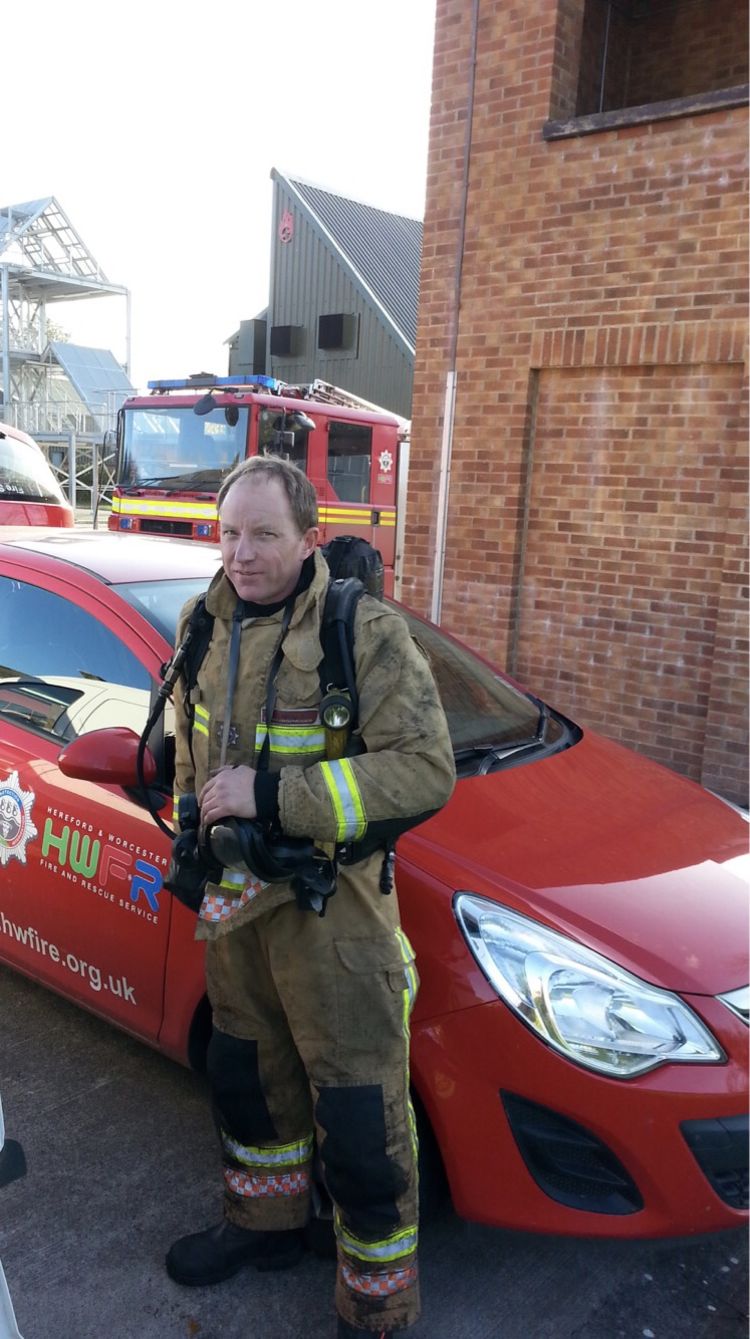
Lee Champ
Lee Champ
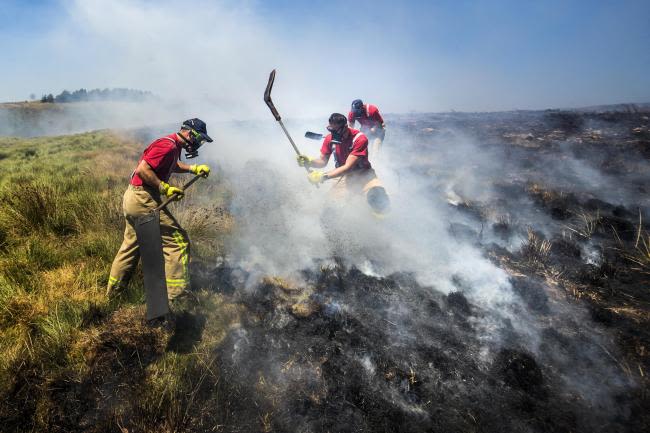
Fire service library
Fire service library
South Yorkshire also saw a rise in wildfires with 302 more fires occurring in 2018 than in 2016.

Professor Smith said: “The UK has a very unnatural, fractured landscape with lots of paths, roads and walls that help prevent the spread of wildfires.
“Countries with continuous savannas, grasslands or forests usually experience larger-scale wildfires due to the continuity in the fuel, so it’s unlikely the UK will ever have wildfires on the scale of Australia because of this.
“However, predicted warmer, drier summers will increase the risk of larger and more intense fires, just not quite on the same scale as Australia.”
Greater Manchester has seen one of the biggest spikes in wildfires with an increase of 210 per cent since 2016/17.
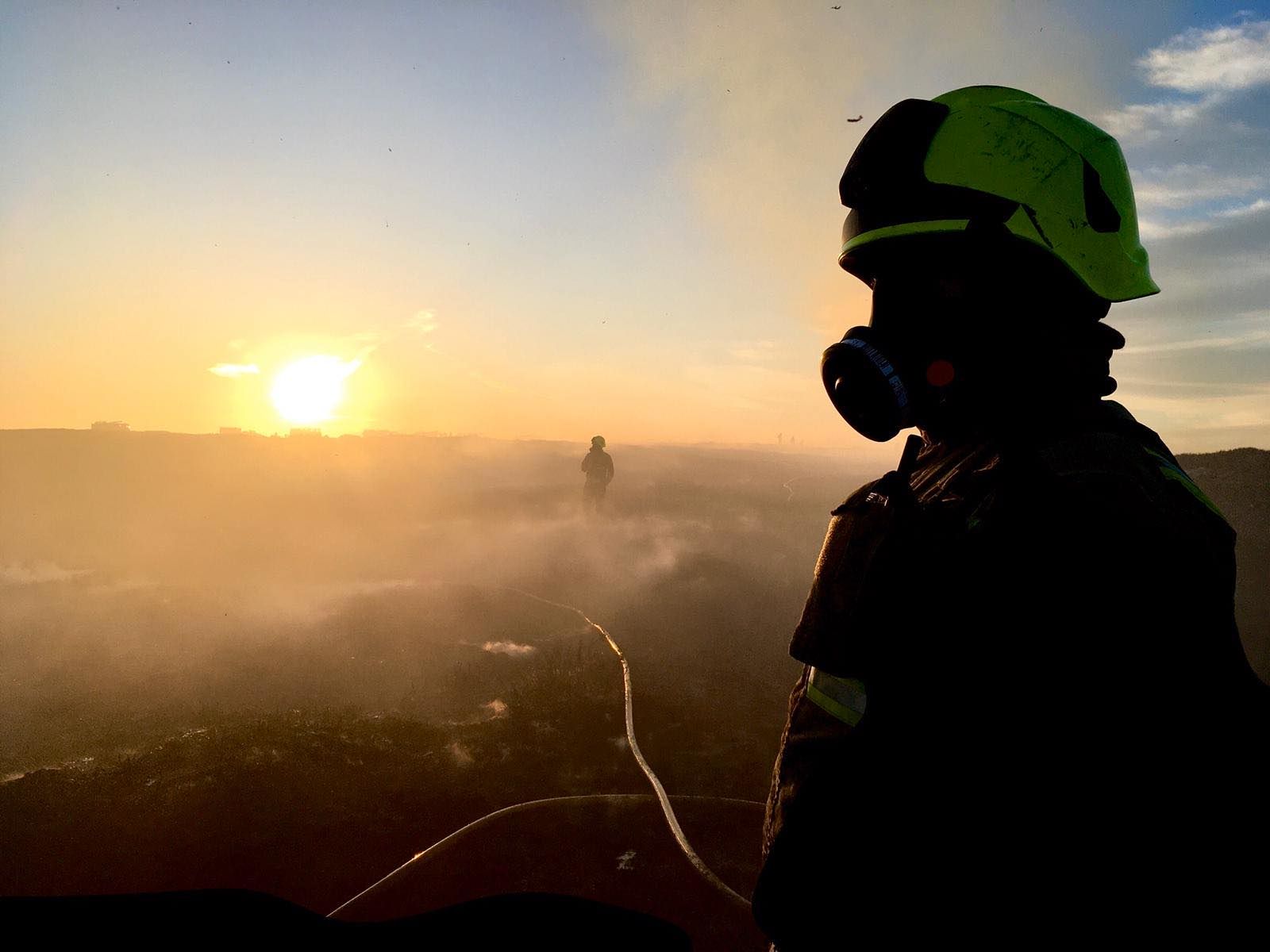
Photo by Shaun Walton (@Walton_FIRE)
A spokeswoman from the National Fire Chiefs Council said: “Both 2018 and 2019 [have seen a] particularly high spike, this has been experienced globally and likely linked to climate change.
“We have messages for the public on how they can help to prevent wildfires for example, never leaving open fires or BBQs unattended, never having fires or BBQs in undesignated areas, disposing of rubbish safely - hot ashes from BBQs in the countryside have caused wildfires, and glass bottles and cigarette stubs have led to fires too. We have also been warning people about the dangers of sky lanterns.”
Information on wildfire prevention can be found at the National Fire Chiefs council website.
